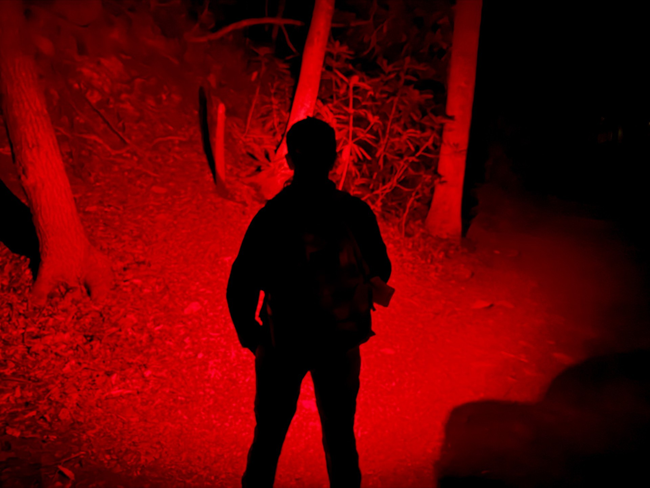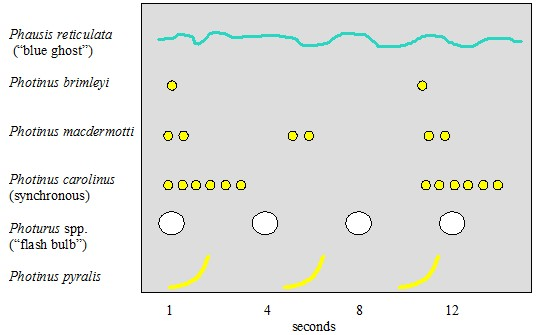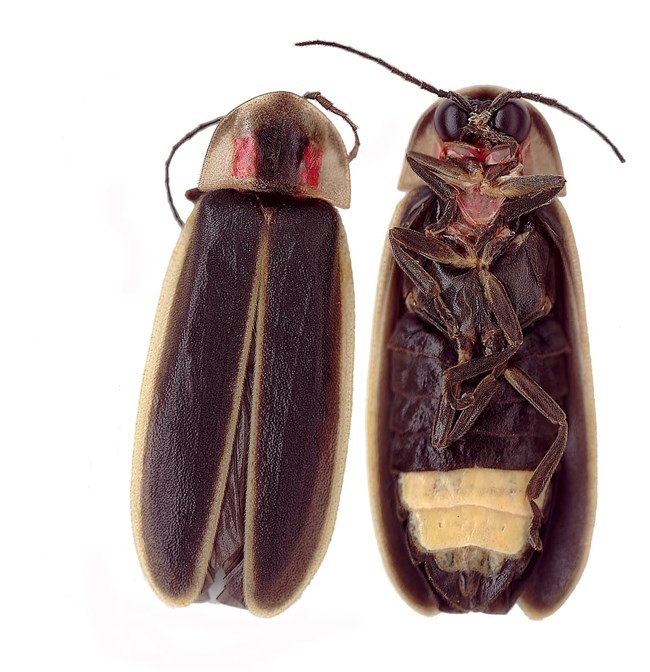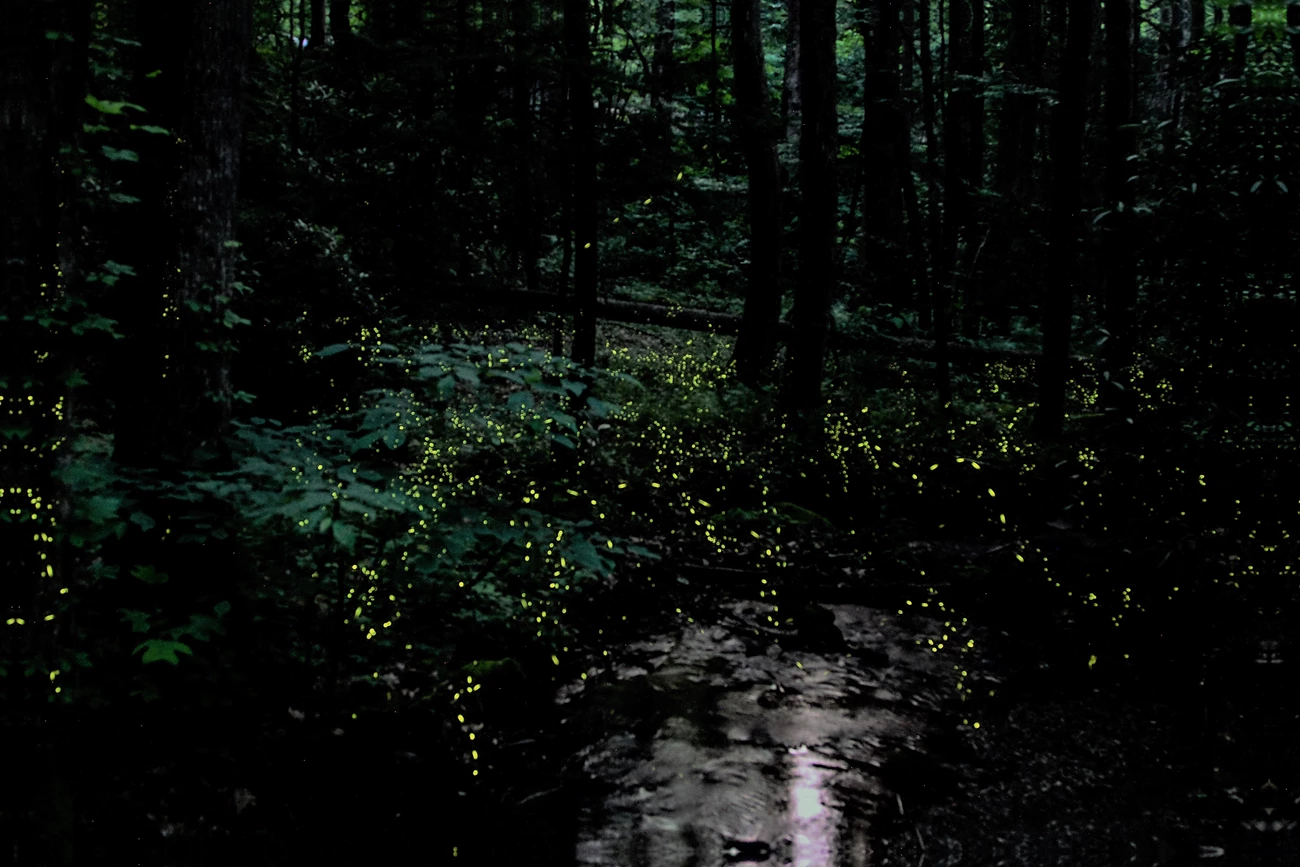
Courtney Fitzgerald Firefly Viewing EtiquetteTo ensure you have the best experience, please follow proper viewing etiquette. Flashlights can disrupt the firefly display and impair others’ night vision.
You can also help protect fireflies and their habitats:
Why is There a Lottery to View Synchronous Fireflies in Elkmont?The Elkmont area in Great Smoky Mountains National Park is home to a large population of synchronous fireflies. As news of this extraordinary natural phenomenon spread, the number of visitors surged, resulting in heightened safety hazards and damage to resources in the area. To mitigate this impact, the National Park Service (NPS) reduced visitation to the area and eventually created a lottery system. This allowed a limited number of visitors to view these beautiful creatures while ensuring preservation. Since the park began managing this area the visitor experience has become more enjoyable, and the resource has remained protected. We encourage you to do your part in safeguarding these remarkable insects. By adhering to park regulations and sticking to designated trails, you play a vital role in protecting countless species in the Smokies. Thank you for your commitment to preserving the wonders of nature!
NPS What are Fireflies?Fireflies, often referred to as lightning bugs, are fascinating beetles with many having the unique ability to light up their abdomens. The majority of their life cycle—lasting one to two years—occurs in the larval stage. During this time, they feast on snails, worms, and smaller insects in the leaf litter of forest floors. However, when they finally transform into their adult form, the rest of their life cycle is just three to four weeks long, with many not feeding at all.Why do fireflies flash?The enchanting flash of a firefly serves a vital purpose: attracting a mate. Each species of firefly possesses a unique flash pattern that plays a crucial role in their mating display. These distinct light patterns help male and female fireflies of the same species identify one another. Most species emit a greenish-yellow light, but some species showcase more of a blue or white hue. Typically, males flash while in flight, while females—often perched on the forest floor—respond from below.
NPS How do fireflies produce light?The science behind this phenomenon is known as bioluminescence, a natural process also seen in certain fungi, fish, shrimp, jellyfish, plankton, salamanders, gnats, glowworm beetles, and more. Firefly flashes are remarkable examples of bioluminescence, producing light through highly efficient chemical reactions that generate light with minimal heat. In their lanterns, a part of their abdomens, fireflies mix the chemical luciferin with oxygen and the enzyme luciferase, resulting in a ‘cool’ glow that boasts nearly 100% light. In contrast, traditional incandescent bulbs emit only about 10% of their energy as light, with the remaining 90% as heat. Fireflies of the SmokiesGreat Smoky Mountains National Park is home to 19 unique species of fireflies out of over 2,000 species identified worldwide. Among these, the synchronous fireflies (Photinus carolinus) are particularly famous, known as one of few species with the incredible ability to synchronize their flashing patterns. This mesmerizing display transforms sections of the forest into a flickering spectacle, a true marvel of nature. Why the synchrony?Researchers have investigated the reasons behind this synchronized flashing behavior; however, the synchronous behavior is not yet fully understood. One theory suggests that males flash in unison to elicit a call-and-response interaction from the females. A study found that female fireflies of this species only respond when an adequate amount of flashing is presented to them. Once enough light is generated in the forest, the much dimmer females will respond during the pauses in the males' flashing pattern. The flash pattern of Photinus carolinus is a remarkable sequence of five to eight distinct flashes, followed by an eight-second pause of darkness, before the cycle repeats. Initially, the flashing may appear random, but as more males join in, their rhythms align, creating a breathtaking display of pulsating light throughout the forest. When do these fireflies display?The mating season for synchronous fireflies lasts approximately two to three weeks each year, with the exact timing varying based on environmental conditions such as temperature and soil moisture. The park uses soil temperatures to predict the optimal dates for the viewing opportunity in Elkmont. Nature's unpredictability means that the peak of firefly activity can shift year by year. Since 1993, recorded peak dates have ranged from the third week of May to the third week of June. As the mating season unfolds, the display begins with just a few flashing insects, but soon more join the spectacle, till the season peaks before gradually declining as the season comes to an end. Environmental factors may influence these nightly displays; heavy rain often halts their flashing, while misty weather will likely not stop their display. Cool temperatures below 50º Fahrenheit can also reduce the number of active fireflies. 
Bielenberg |
Last updated: June 6, 2025
